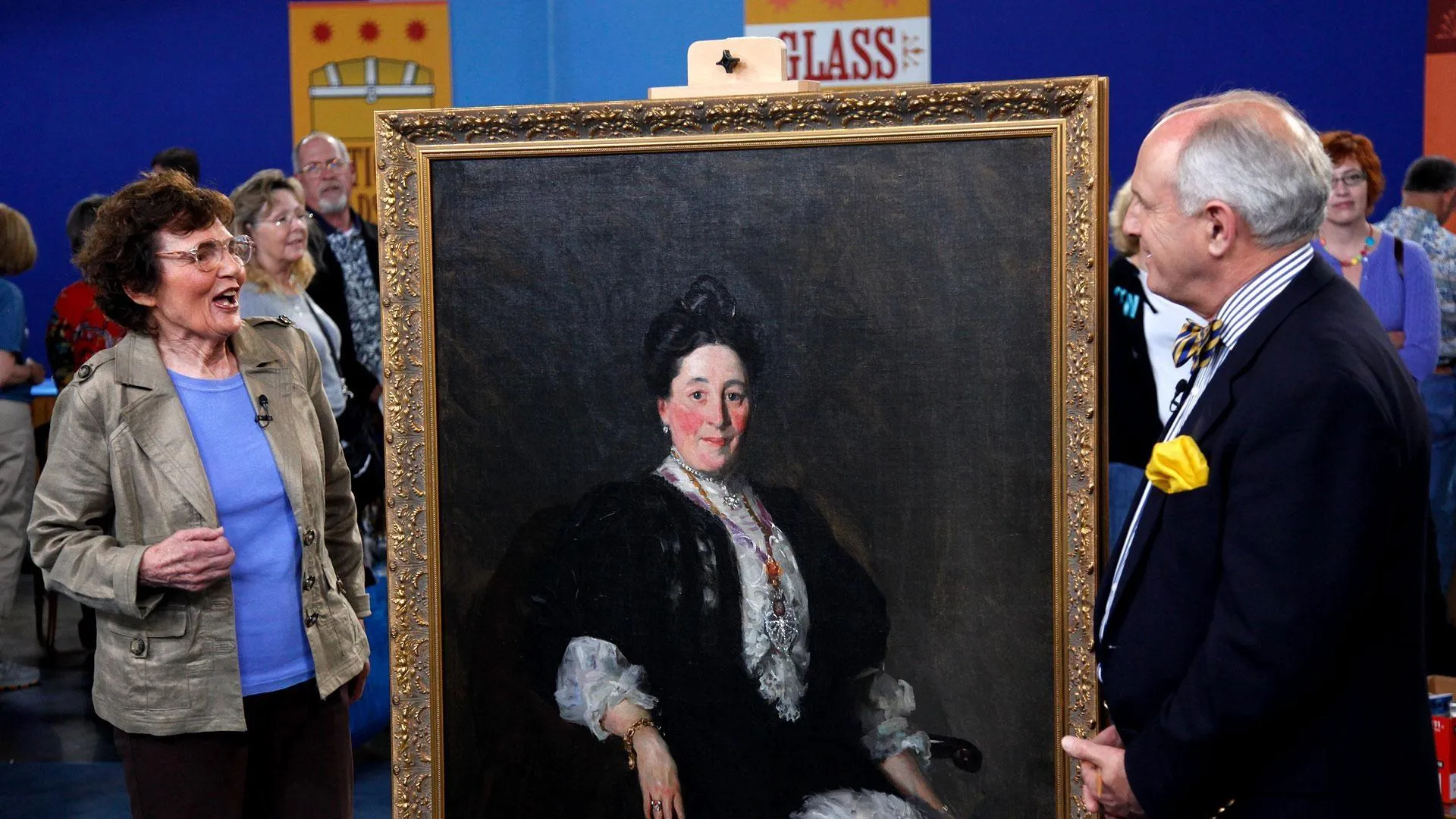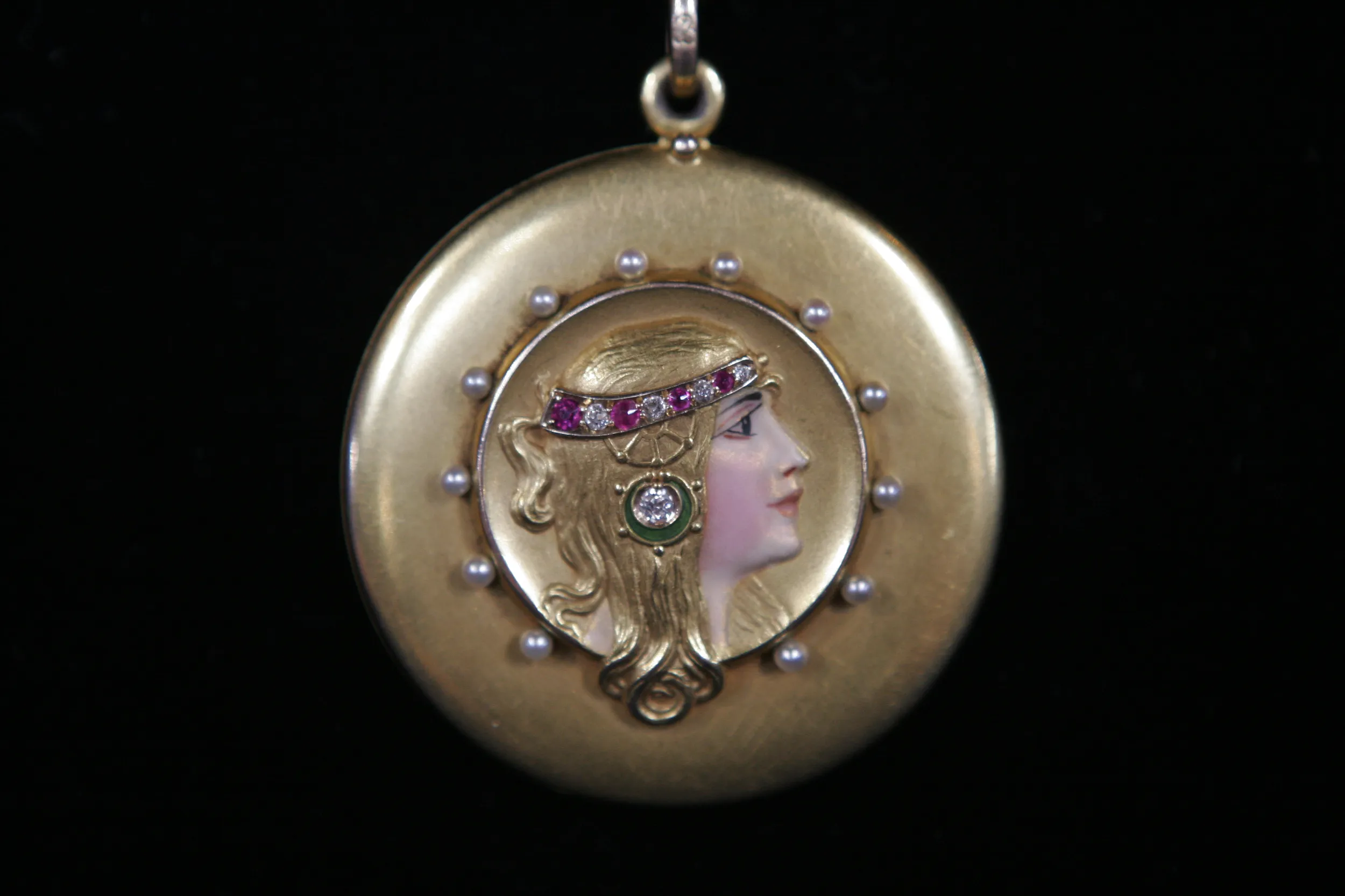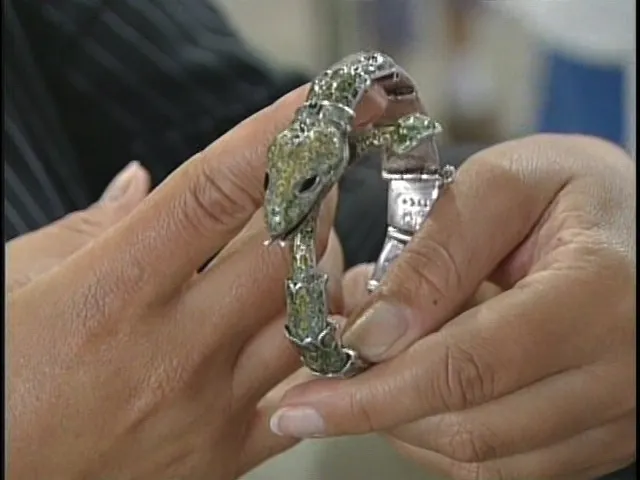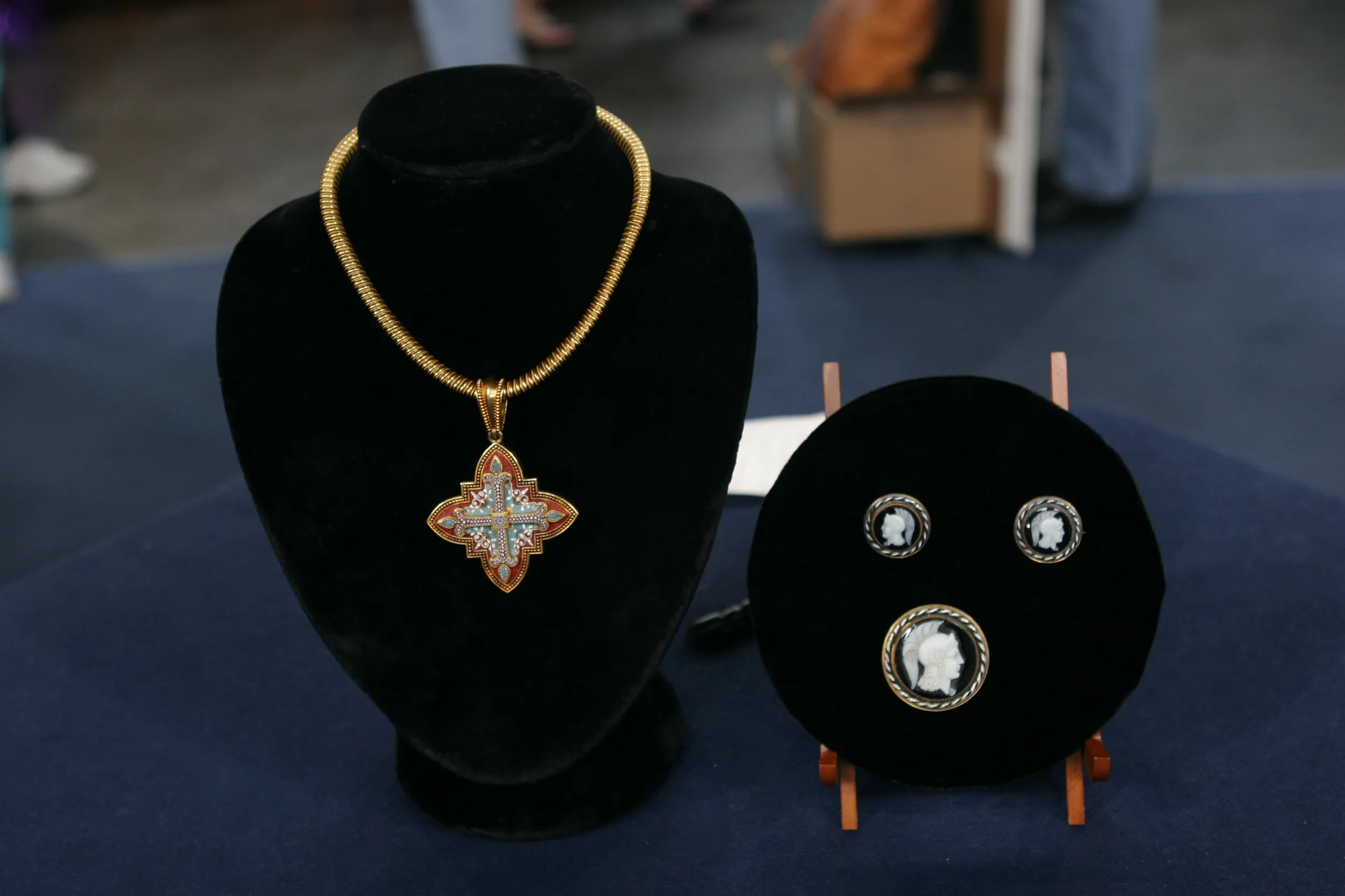GUEST: It belonged to my father-in-law's great-great-grandmother. They lived in Pittsburgh, Pennsylvania. It was given to her on the birth of her son in 1864.
APPRAISER: And was he the first child, do you know?
GUEST: Yes.
APPRAISER: That was not uncommon in the 19th century, and it's still a tradition today that usually, when you have a child, you're given a gift by your husband. This is quite an interesting gift, though, a little more elaborate than what we typically see. What we have here is a beautiful cameo set. And we refer to this type of set as a Parure, meaning that it's a collection of different pieces of jewelry. So we have here a bracelet, earrings, a brooch. There's another brooch down here as well. On the ROADSHOW, we see many cameos.
GUEST: Mm-hmm.
APPRAISER: Cameos are carved either out of shell or out of stone. The stone is much harder, and so the more beautifully articulated the stone cameos are, the more valuable they are. And with most cameos, you get that side profile of the figurine itself. What's unique about this is the absolute thickness and dimensional quality of these particular cameos. When you look at a side view of this, you can really see how thick the material was here. This is all one stone, and it was a banded agate, so the bottom layer was a sort of grayish material, the middle layer was this white, and they carved the white away to expose the contrasting background and also to create the detail of the portraiture. So these very large three-quarter portraits are really quite unique.
GUEST: Oh, really?
APPRAISER: The other thing that's nice about this is that if we look in here, we see that the retailer was Tiffany & Co. And based on the address of Broadway, combined with the year date that we know that this was, this was a piece that was retailed by Tiffany. It was not a piece that they themselves made.
GUEST: Right.
APPRAISER: It was probably purchased in Italy and then re-retailed through the store. Now, in terms of who actually made the set, that's unknown. Although we know based on the carvings and the type of gold work, it is Italian. It's not signed, and that's very typical of jewelry from this period, which is the 1860s, 1870s.
GUEST: Okay. I wondered if this was 18-karat gold?
APPRAISER: This particular gold value here is 14 karat.
GUEST: 14, okay.
APPRAISER: The other thing about the piece here is the cuff buttons. Ladies actually wore cuff buttons in the same way that men wear cufflinks during this period. But what happened was, I think they didn't like them as cuff buttons. So somewhere later in the 19th century, they created the bar pin. But these bottoms here were actually cuff buttons.
GUEST: Oh, okay.
APPRAISER: Have you ever had the item appraised?
GUEST: Once at a local antique show, and all they could say was, "Oh, this is priceless," and so they never put a dollar figure on it.
APPRAISER: So they weren't willing to quite commit to a price. You know, it's understandable. It's not something that most people are familiar with. A set of this scale and magnitude, I would say for insurance purposes should be somewhere between $25,000 and $35,000.
GUEST: Okay. (chuckling): Mmm, great.












